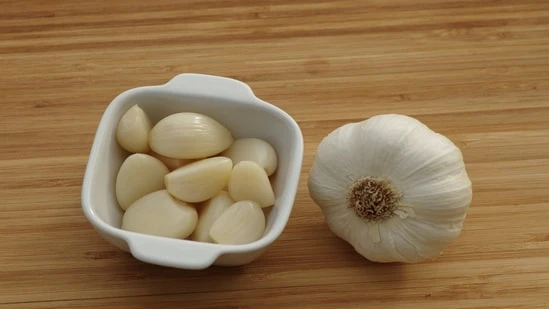What went wrong with actor and model Shefali Jariwala? The sudden death of Shefali at just 42 has left many shocked and concerned, with early reports linking her cardiac arrest to an IV glutathione drip taken while fasting.
Dr Anupriya Goel, a dermatologist, raises awareness about the potential risks of cosmetic treatments performed without proper supervision, noting that fasting, dehydration, and underlying health conditions can make these seemingly safe procedures dangerous.
Glutathione, a powerful antioxidant, plays an essential role in the body by defending against illness, reducing inflammation, and protecting cells from damage, thereby improving skin health. In recent years, glutathione treatments for anti-ageing and skin brightening have garnered attention. But did you know that you can naturally boost your body’s glutathione levels by incorporating the right foods into your diet. Let us tell you about foods rich in glutathione and share tips on how to encourage its production through your daily meals.
What is glutathione?
Glutathione is a potent antioxidant that helps protect cells from oxidative stress and damage, states Antioxidants Journal. It contributes to liver detoxification, plays a role in DNA synthesis, and is involved in various metabolic processes. “Low levels of glutathione have been linked to several health issues, including chronic diseases, fatigue, and impaired immune function. Therefore, incorporating glutathione-rich foods into your diet can be beneficial for maintaining optimal health,” shares dietitian Gulnaaz Shaikh of KIMS Hospitals.
Are glutathione-rich foods better than supplements?
“In many cases, glutathione-rich foods are a better and safer option compared to supplements, especially when it comes to long-term health and minimal side effects. Natural food sources help support the body’s natural glutathione production without the risks associated with high-dose supplementation,” says Dr Bhavya Swarnakar, MD, dermatology, Apollo Hospitals.
“However, for individuals seeking targeted cosmetic or anti-ageing benefits, especially skin brightening, supplements – particularly oral glutathione – are sometimes recommended under medical supervision. While oral forms are generally safe, they can cause mild stomach discomfort in rare cases. Intravenous (IV) glutathione, on the other hand, may carry serious risks like skin allergies or effects on the liver, kidneys, or thyroid, and should only be administered by experienced professionals,” explains Dr Swarnakar.
While natural dietary intake is ideal for overall health, supplements may be considered in specific cases, but only after consultation with a qualified dermatologist or plastic surgeon who can advise on the appropriate form, dosage, and duration.
What foods are naturally rich in glutathione?
Glutathione, often referred to as the ‘master antioxidant’, is crucial for neutralising harmful free radicals and supporting vital bodily functions. This tripeptide, comprising the amino acids glutamine, cysteine, and glycine, plays a vital role in detoxification, immune health, and overall well-being.
“While our bodies generate glutathione, we can elevate its levels through dietary choices. Incorporating glutathione-rich foods such as watermelon, strawberries, spinach, avocados, and broccoli into our meals can significantly benefit our health. Ideally, these should be consumed fresh or lightly cooked, as this helps retain their antioxidant properties. Moreover, maintaining a diet full of colourful, whole foods is key to bolstering your body’s natural immunity,” explains Dr Rajeshwari Panda, head of the dietetics department, Medicover Hospital.
Foods high in glutathione
Several glutathione-rich foods can help boost your glutathione levels. Here’s a list of some of the most effective options shared by Fauziya Ansari, Dietician, Apollo Spectra, Mumbai:
1. Cruciferous vegetables
Cruciferous vegetables are among the best sources of glutathione, along with other glutathione-rich foods. These include:
- Broccoli: High in glucosinolates, which can enhance the body’s production of glutathione.
- Brussels sprouts: Packed with nutrients and known for their antioxidant properties.
- Cabbage: Provides essential vitamins while promoting the production of glutathione, a key antioxidant.
- Cauliflower: A versatile vegetable that’s easy to incorporate into meals.
2. Allium vegetables
Another group of vegetables that support glutathione levels includes alliums, such as garlic and onions, as noted in the Archives of Biochemistry and Biophysics. These are known for their sulfur-containing compounds, which are essential for glutathione synthesis:
- Garlic: It contains sulfur compounds that help boost glutathione levels in the body.
- Onions: Rich in quercetin, an antioxidant that can enhance glutathione.
- Leeks: A milder option that provides similar benefits.
3. Fruits
Certain fruits are also known to support glutathione levels. Incorporating these glutathione-rich foods into your diet can help boost your body’s antioxidant defence. Look for:
- Avocado: High in healthy fats and rich in nutrients, including glutathione.
- Watermelon: It contains lycopene, which may help to increase glutathione levels.
- Strawberries: Rich in vitamin C and antioxidants, promoting glutathione efficiency.
4. Nuts and seeds
Including nuts and seeds in your diet can also contribute to your glutathione intake, as research published in the journal Nutrients:
- Pistachios: Known for their antioxidant properties and healthy fats.

- Walnuts: A great source of omega-3 fatty acids that support overall health.
- Flaxseeds: High in lignans and omega-3s, making them a healthy addition.
5. Legumes
Legumes are a great source of protein and other nutrients that promote the production of glutathione:
- Lentils: High in fibre and key nutrients, making them a powerhouse for health.
- Chickpeas: Versatile and nutritious, they can be easily added to many dishes.
- Kidney beans: Packed with protein and essential nutrients.
6. Whole grains
Incorporating whole grains can also aid in glutathione production, says a study published in Nutrients.
- Brown rice: A nutritious alternative to white rice, offering more fibre and nutrients.
- Oats: Rich in antioxidants and a healthy way to start your day.
- Quinoa: A complete protein source that provides a variety of vitamins and minerals.
Cooking methods matter
When preparing these glutathione-rich foods, it is essential to consider how cooking methods can affect their nutrient content, according to Biom Probiotics.
- Steaming: This method retains most of the nutrients and preserves glutathione levels intact.
- Raw: Eating certain vegetables and fruits raw can help preserve their natural antioxidants.
- Minimal cooking: Avoid overcooking; lightly cooking vegetables can enhance their digestibility without significantly depleting their nutrients.
How to enhance glutathione production?
Glutathione plays a crucial role in protecting your skin and detoxifying your body. However, did you know that your daily habits can significantly impact your natural levels? In addition to consuming glutathione-rich foods, Dermatologist Lalita Arya shares confident lifestyle choices that can help enhance your body’s natural production:
- Exercise: Regular physical activity has been shown to increase glutathione levels.
- Adequate sleep: Good quality sleep supports overall health, including antioxidant levels.
- Hydration: Staying well-hydrated is crucial for detoxification processes.
- Stress management: Chronic stress can deplete glutathione; therefore, practices such as meditation or yoga can be beneficial.
Let your skin reflect your inner health.
